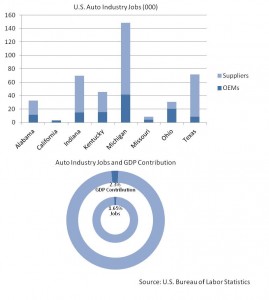
Practically everyone who has been in industry long enough has seen this cartoon, depicting the inadequacies of product design, engineering or customer service, which hung on many cubical walls in the 1970s and 1980s. The origins of this cartoon are uncertain and may date as far back as 1950’s. It was appeared in the context of quality management in 1989 in John Oakland’s book Total Quality Management. You can visit businesballs.com to read more about the history of the tree swing cartoon.
The cartoon shown here dates back to 1972. Forty years ago! A quick history lesson. In 1972, mainframes still dominated the computing space. The first video game – Pong – was just invented, and Bill Gates was busy writing a BASIC interpreter for the first 8-bit microprocessor. It would take another 5 years before Steve Wozniak designed the Apple II.
So even though this cartoon dates back to the stone age of technology, we still use it as a symbol of our project management incompetency and find it funny. Have we not made any progress over the last 40 years? More importantly, can modern software tools, specifically PLM and PDM, make us better planners, designers, or engineers?
I have some theories and far fewer solutions to the challenge, which I will share in a future blog post. In the interim, I invite you to share your opinions and ideas.
Fueled by strong demand for cars and trucks, U.S. automakers are accelerating production and, in some cases, canceling the industry’s traditional summer factory shutdowns. According to LMC Automotive, all brands, except Volkswagen Group, are expected to increase manufacturing output, running production near 90% of capacity.
LMC forecasts total production in 2013 of 16 million vehicles, the highest since 2002, when the industry produced 16.5 million units. If true, the automotive sector will be one of the brighter spots in the otherwise lackluster manufacturing landscape in 2013.
On the other hand, if demand does not meet expectations, automakers will end up, not for the first time, with excess inventory. Initially, the extra production would boost revenue, because automakers book revenue when they ship a vehicle to a dealer, but in the long run they will have to make room for 2014 cars, and will be forced to offer discounts and incentives to the get cars off the dealers’ lots. If you are in the market for a new car, end of 2013 model year may be a good time to find a good deal.
For years I have been preaching for higher level of design reuse in the automotive industry — an industry that inexplicably insists that every bolt, bracket and belt has to be unique to each model. And from time to time, a part used in one model year does not fit other model years.pReusing parts is not only helping reduce manufacturing and dealer inventory, but can also accelerate product design, improve quality and reduce manufacturing cost.
The automotive industry is slowly coming to the realization that it needs to do a much better job in focusing on meaningful and differentiating innovation and reuse existing design whenever possible. Two OEMs that I often single out as leading the pack in designing multiple models based on a single platform that allows high level of reuse are Ford and Volkswagen. But recently I found out first hand that VW does not always follow what it preaches.
My brand new Passat had a minor pressure leak in the fuel system that was probably caused by a faulty fuel filler cap. The dealer’s service department had a Passat cap in inventory, but, as it turned out, Volkswagen engineeres decided to use different fuel caps in cars equipped with 2L engine and in models using larger engines; it did not fit my car with a 3.6L V6 engine.
I am really curious to understand why VW engineers were not able to use the same fuel filler cap on all 2012 Passats (actually, why not the same cap in all VW and Audi models?)
The solution was to commandeer a cap from one of the new cars in inventory. The new cap seems to have solved the problem. Thanks for asking.
Dassault Systèmes announced the launch of “Target Zero Defect,” an industry solution for the automotive industry the company argues will “enable zero defects across the entire product development process”, although it offers no details as of how this “industry solution” actually works. While a noble ambition, it is an impractical goal.
It’s not that the auto industry is incapable of building much higher quality products. The problem stems from the fact that 70% or so of a car value is delivered by multitude of large and small suppliers, and the automotive supply chain is complex and fragmented. Couple these with the pressure to get new cars to market faster and at low cost, and you realize that “zero defects” is an unattainable goal. Read More

